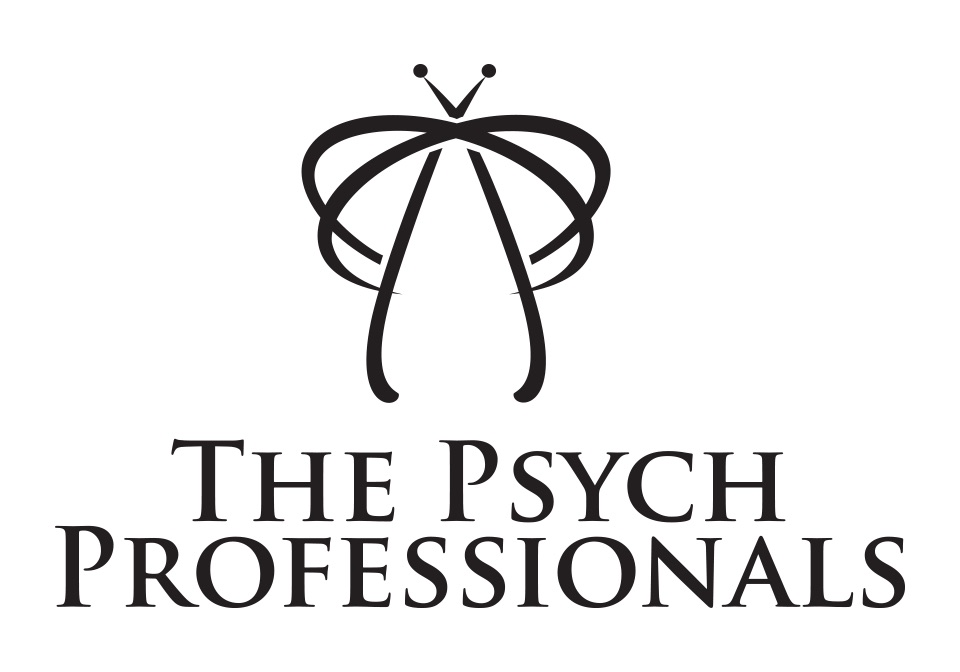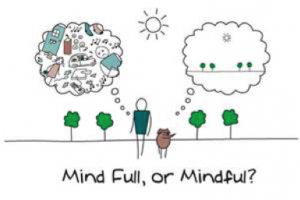What is mindfulness?
Mindfulness is defined as “moment to moment awareness…being fully awake…being here for the moments of our lives, without striving or judging”. By not striving, we remain present and stop searching for those things in life that have not yet happened. How often have you thought to yourself ‘If only I could go on a holiday, then I’d be happy’, only to go on a holiday, feel happy momentarily, then return to day to day life and the mood you were trying to avoid? This is sometimes referred to as the ‘Happiness Trap’. Not judging refers to the process of allowing thoughts, whether positive or negative (but particularly negative) to pass into the mind and leave just as quickly. How often do you experience the thought ‘I’m not good enough’, and once you listen to and judge this thought, other similarly negative thoughts follow and you feel a downward spiral of mood?
Another way to view mindfulness is the act of seeing things more clearly, and paying attention moment to moment to moment. When you are mindful, you notice things as they happen, in real time. Doing so creates space and time to respond to these thoughts, feelings, people or situations, with a considered approached, rather than reacting with emotion.
Why mindfulness?
Scientific research is now able to explain some of the benefits of mindfulness. For example:
Physical health:
- Dramatic reductions in pain levels and an enhanced ability to cope with pain that may not go away
- Improve digestion and blood circulation
- Decrease in auto immune responses
- Improved energy levels
Mental health:
- Dramatic decreases in anxiety, depression and hostility
- More effective skills in managing stress
- An increased ability to relax
- Greater energy and enthusiasm for life
- Improved self-esteem
Relationships:
- Improved interpersonal relationships
- Better ability to respond to situations and problem solve
Children:
- Increased attention and concentration
- Increased emotion regulation skills
- Improved confidence
- Decreased overall stress
How do I become ‘mindful’?
Mindfulness is a journey of self discovery – a process of becoming more and more mindful. It is not really about being mindless and becoming mindful suddenly (although that would be great)! The simple answer is: with practice! Like any new skill, the more you practice the better at it you become.
Mindfulness can be formal or informal in practice. Formal mindfulness practices require dedicated time and space to practice, such as a daily meditation ritual. Informal mindfulness practices can be done anytime, anywhere, without prior organisation. Here are some formal and information mindfulness strategies to help bring mindfulness into your life, TODAY:
Informal Mindfulness
- Mindful communication– When you are speaking or listening to someone else, become aware of the sound of your own voice, or the voice of the other person. Each time your mind wonders off into other thoughts, kindly guide your attention back to the conversation without criticising yourself if you can.
- Mindful walking– The next time you’re walking somewhere, notice the sense of touch between your feet and the ground. Observe how your weight seamlessly transfers from one foot to the other, almost effortlessly. Smell the roses. Be in the presence of the present moment.
- Mindful exercise– The next time you’re in the gym, going for a jog, swimming or playing a sport, become mindful of what’s going on. Focus your mindful attention on your own body, thoughts, emotions or the environment around you. Become curious about your experience.
- Mindful working– Whatever your work is, by paying more attention to what you’re doing, you’re bound to achieve better results. Try reducing the amount of effort you make to pay attention, and let the focus be effortless, relaxed and calm, as best you can.
- Mindful holidays– It’s easy to spend half your holiday thinking about the next holiday rather than actually being there. Feel the gentle warmth of the sun, put the camera down every now and then and connect with the scenery with your own eyes. Breathe the fresh air. Be grateful for having the time and money to go on holiday.
- Mindful waiting– You need to wait in a queue in shops, in your car, on public transport. Instead of becoming frustrated, practise some mindfulness of breath. When you’re in traffic, notice the colour of the sky or trees. When in a supermarket, feel the calming sensation of your own breath.
- Mindful listening to music– Get yourself comfortable, switch on your favourite piece of music and simply listen, moment by moment. As usual, after a while your mind will begin thinking of other things – just gently guide your mindful attention back to the sounds of the music. Be aware of both the sounds and the silence between the sounds. Notice how all sounds arise and fall back into the ever-present silence.
- Mindful accepting of others– Allow other people to be human and make mistakes. Be prepared to accept apologies and forgive others for their indiscretions.
- Live in the moment– Pause to sniff those roses. Take a break from speculating about the future and sifting over the past. Instead, put the full weight of your attention into the here and now.
Formal Mindfulness
- Body Scan Meditation– This meditation involves spending about half an hour or so, becoming aware of each part of your body from the tips of your toes to the top of your head, in a mindful way. This meditation is usually practised lying down.
- Sitting Meditation– This involves being mindful of your chosen object of attention whilst in a sitting posture. You can be mindful of your breath, your body, sounds, thoughts, emotions, or practise choice-less awareness.
- Mindful Movement– Taking time to do some yoga or stretching in mindful way is a powerful way of developing your capacity to be mindful, whilst at the same time becoming stronger and more flexible. Walking slowly and mindfully is also considered a wonderful way to practise formal mindfulness meditation. You don’t need to be physically still to practise meditation.
- The Three Minute Mindful Space – Use this in moments of stress, when you are troubled in thoughts or feelings. You can use it to step out of automatic pilot; to reconnect with the present moment and your own inner wisdom. Follow these three steps:
- 1: Acknowledge: Bring yourself into the present moment by deliberately adopting a dignified posture. Then ask: ‘What’s going on with me at this moment? What thoughts, feelings and body sensations am I experiencing right now? You could put your inner experience into words, for example, say in your mind, ‘A feeling of anger is arising’ or ‘self-critical thoughts are here’ or ‘my stomach is clenched and tense.’
- 2: Gather: Gently bring your full attention to the breathing. Experience fully each in-breath and each out-breath as they follow one after the other. It may help to note at the back of your mind ‘breathing in…breathing out’, or to count the breaths. Let the breath function as an anchor to bring you into the present and to help you tune into a state of awareness and stillness.
- 3: Expand: Expand your awareness around the breathing to the whole body, and the space it takes up, as if your whole body is breathing. Especially take the breath to any discomfort, tension or resistance you experience, ‘breathing in’ to the sensations. While breathing out, allow a sense of softening, opening, letting go. You can also say to yourself ‘it’s ok to feel whatever I’m feeling.’ Include a sense of the space around you too. Hold everything in awareness. As best you can, bring this expanded awareness into the next moments of your day.
Useful links and resources
Mind your Body: The Connection https://www.theconnection.tv/
Jon Kabat-Zinn’s Mindfulness Based Stress Reduction Clinic: http://www.mindfullivingprograms.com/whatMBSR.php
If you are interested in learning more about mindful therapeutic practices or would like to make an appointment, you can call/email one of our friendly Client Relationship Team Members (i.e. receptionists) and they will be happy to answer any questions you might have and provide you with some information:
Loganholme Practice: P: (07) 3801 1772 | E: info@psychprofessionals.com.au
Capalaba Practice: P: (07) 3823 2230 | E: contact@psychprofessionals.com.au
Or, go to our website at www.psychprofessionals.com.au/contact-us and complete our Online Enquiry Form and someone will call you at a time convenient to you.

